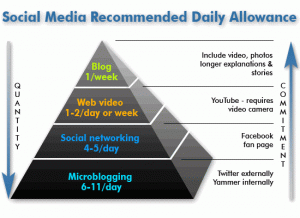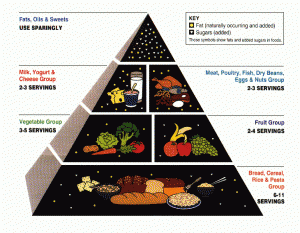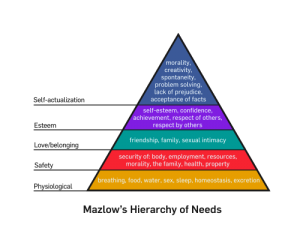At the FUEL social media meeting in Rochester, someone asked:
Don’t you really have to be special or unique to gain from social media? I mean, if there are 200,000 T-shirt vendors on Twitter, aren’t you going to waste a lot of time trying to get noticed? What if there is nothing that really sets you apart from others. Aren’t you going to be lost in the crowd, spending a lot of time for no gain?
Given that this presentation was in early July, I guess this question no longer fits the recency criterion for an RAQ, but I think it’s still a valid question to discuss. It also reminds me of something in the printed materials my son got when starting high school. It said something like, “You’re unique, just like everyone else,” which struck him as extremely funny.
It’s a reasonable question to ask, whether you have to be a major brand like Mayo Clinic or Dell to derive value from social media. And obviously an organization like Mayo Clinic has some significant advantages, such as passionate patients and employees and a history of making its reputation through word-of-mouth.
But as we heard from Tom Vanderwell yesterday, there’s plenty of opportunity for people to derive significant benefit from being engaged in social media, even if you’re selling something that is a commodity. After all, many people are just going to shop for the best interest rates online, and a loan is a loan is a loan. Through his blog, Tom has set himself apart from many of his local peers, and also has joined a network of national professionals involved in real estate and mortgages. Because others have come to know him through blogging, Facebook and Twitter, they trust him. And he’s getting business because of it.
So does that mean there is unlimited potential for all of the other mortgage lenders in western Michigan to profit similarly from social media? Nope. There will be some room for others, but they will need to establish “tweet cred.” And the community will pretty quickly sniff out those who are just into social media as a “quick buck” tactic. Social media make it free to communicate, but they also provide mechanisms for people to fight back against those who pollute the digital commons and don’t contribute meaningfully.
If you have a passion for a subject area (like Tom does with mortgages) and want to communicate about it in a way that helps others, you’ll probably do well with it. You don’t have to necessarily be unique; in fact, it helps to have at least a few others in your digital community so you can build off each other’s contributions.
And like Tom Vanderwell, you should think about how the advent of free and easy digital communications can help you conceive your business in a way that transcends geographic limitations.


